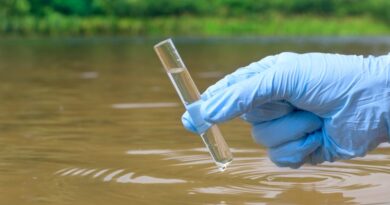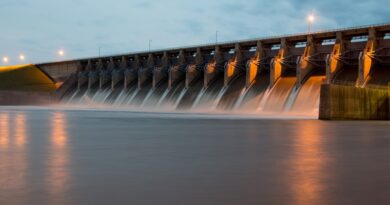Bridging water demand and supply gap in Delhi
Rumi Aijaz
In this article, the situation of water supply and disposal in Delhi is described. The analysis reveals that Delhi government is lagging behind in service delivery, and there is a serious crisis in areas not covered by piped water and sewerage networks.
To minimise the crisis, the author discusses ideas for arranging more raw water from neighbouring water abundant states, revival of water bodies, rainwater harvesting, wastewater recycling and reduction of water losses.
Water supply is an important responsibility of every city government. The method followed in delivering this essential service to citizens is a critical factor in determining the water supply situation in the city.
Globally, differences are observed. Some governments have reached a level where piped water supply is available to every consumer round the clock, and the water supplied is suitable for drinking. This means that tap water is always available, and any person can utilise water at any time. Water supplied through pipelines is considered as the best delivery method that ensures a clean and reliable supply.
Unfortunately, not all city governments of the world display such performance. In many cities, citizens are facing problems in receiving water every day. India’s populous capital city, Delhi, for example, exhibits many water-related problems. The data on various aspects of water help in understanding where the city stands in this regard.
In Delhi, about 17 per cent households do not have access to piped water supply. These households are mainly situated in unplanned unauthorised colonies and slums, which exist in various parts of the city. The law does not allow for provision of basic services in unplanned and illegally built structures, hence these have been left out.
With time, it is realised that all unauthorised colonies should be regularised and residents living in these colonies should be given proper access to all basic services. Thus, work related to regularisation, infrastructure and service provision (expansion of piped water and sewer network) is underway.
Presently, households without piped connections are supplied water by tankers sent by the city’s water agency, namely Delhi Jal Board (DJB). However, in this arrangement, consumers experience numerous difficulties. A struggle for collecting water from tankers, and irregular, inadequate, impure supply by tankers are common problems observed. This method also affects the livelihood of poor residents due to several hours spent every day in collecting water.
On the other hand, households receiving water from piped network face a different set of challenges – only two to four hours of supply every day, intermittent supply, low water pressure, and inferior quality. Presently, only a few households in three planned colonies (namely Westend, Vasant Vihar and Malviya Nagar) are reportedly receiving 24X7 water supply under a public-private-partnership pilot project.
Thus, residents receiving less water from DJB fulfill their needs in various ways. Though not allowed legally, many install electric pumps to pull water directly from municipal pipeline. This practice adversely affects water pressure in the lines, which in turn affects supply of other consumers.
For controlling the problem of impurities in the piped network, almost everyone uses a water purification system. Some consumers and tanker mafias also resort to illegal extraction of groundwater. This practice is a matter of great concern as the groundwater levels in some parts of Delhi have fallen to over 40 metres.
Another water-related issue observed is the irregularities in handling wastewater by DJB. With almost 80 percent of the water going down the drain after consumption, a sewerage network and treatment plants are necessary requirements for reuse or safe disposal of wastewater.
The data show that as much as 22 per cent of Delhi’s population is not covered by the sewerage network. This includes people living in 1,255 (out of 1,639) unauthorised colonies, 10 (out of 567) unauthorised regularised colonies, 5 (out of 135) urban villages and 165 (out of 219) rural villages, and slums. Moreover, one-third of wastewater generated is not treated before disposal.
Due to absence of sewerage network and insufficient number of wastewater treatment plants (WWTPs), untreated wastewater is discharged in drains that empty into river Yamuna and other surface water bodies. Such practices are harming the health of poor communities living in informal settlements along the river course, and the surrounding environment. With respect to maintenance of sewerage network, it is observed that some sewer holes are cleaned manually, and there are instances of sanitation workers dying or falling ill after inhaling toxic fumes.
In view of the above-mentioned deficiencies in Delhi’s water supply and disposal, ORF undertook a study to understand the reasons responsible for occurrence of problems. The main findings of the study and suggestions for improving people’s access to water are presented below.
The quantity of raw water arranged by DJB from surface water sources (i.e., 91 % from river Yamuna, upper Ganga canal, Bhakra storage and Munak canal) and groundwater (9 %) for production (or treatment) and distribution (or supply) to consumers is a major issue. The quantity produced and supplied (937 mgd) is less than consumer demand {1,260 mgd, at 274 litres per capita per day (lpcd) for both domestic (172 lpcd) and non-domestic (102 lpcd) consumers}; the demand-supply gap being 323 million gallons per day (mgd). Thus, 26 per cent of the demand is not being met.
Less supply by DJB means less (or no) water received by households, as observed from data presented above in this article. How can this gap be bridged, or how can more water be arranged is the main challenge for DJB? Some ideas, which are also being pursued by DJB, are discussed below.
Arranging more water from neighbouring states: Most of the raw water is received from rivers and canals in neighbouring states of UP, Haryana and Himachal Pradesh since Delhi does not have adequate surface/groundwater within its territory.
During summers, demand is high and states curtail supply to meet their own requirements. Thus, a method needs to be developed for obtaining more water from surface sources located closest to Delhi.
Revival of water bodies: Delhi has over a thousand water bodies, many of which are dry or filled with debris, sewage and solid waste. The natural flow of rainwater to these bodies is also disturbed by the unplanned construction and encroachments. These bodies must be revived for storage of water. In addition, new ones need to be created.
Rainwater harvesting (RWH): Delhi receives over 600 mm of average annual rainfall. However, very little rainwater is harvested. Presently, RWH systems exist in DJB properties, government/private schools and colleges, hospitals, housing societies and residential colonies, and few institutions. Some installed systems are not functional. Moreover, RWH is generally for groundwater recharge, and not stored in tanks for reuse due to quality concerns. Therefore, more properties and open spaces in the city where water-logging occurs need to be identified for installation of RWH systems.
Wastewater recycling: Treatment and recycling of waste/drain water is a useful measure for increasing water availability and reducing dependence on surface/groundwater sources. As mentioned above, a third of the total wastewater generated is not being treated, and the wastewater generation-treatment gap is about 247 mgd.
Thus, sewerage network needs to be expanded to cover the entire city, existing network needs to be cleared of blockages and silting, and operational capacity of wastewater treatment plants needs to be increased for reuse of wastewater for potable and non-potable purposes.
Reducing water losses: According to a DJB estimate, up to 40 per cent of the water is lost in production and distribution process. This proportion needs to be brought down by using technologies for pipeline leakage detection, preventing illegal tapping from pipelines and misuse by tanker mafia, reduction of non-revenue water by ensuring 100 percent metered connections, providing dual pipelines for separate supply of potable and non-potable water, introduction of water accounting and auditing measures, further rationalisation of water tariff, and generating greater awareness among citizens about water conservation.
The above analysis confirms inequalities in people’s access to water and sewerage services, which exist due to numerous deficiencies in water management and service delivery. In particular, a large number of poor people living in slums and unauthorised colonies of Delhi are suffering due to non- (or less) availability of these services.
Thus, Delhi Jal Board must implement effective measures to address the deficiencies in the city’s water system in a time bound manner. Citizens too should utilise water carefully so that wastages do not occur.
(The author is Senior Fellow at ORF)
(Source: Orfonline.org)


